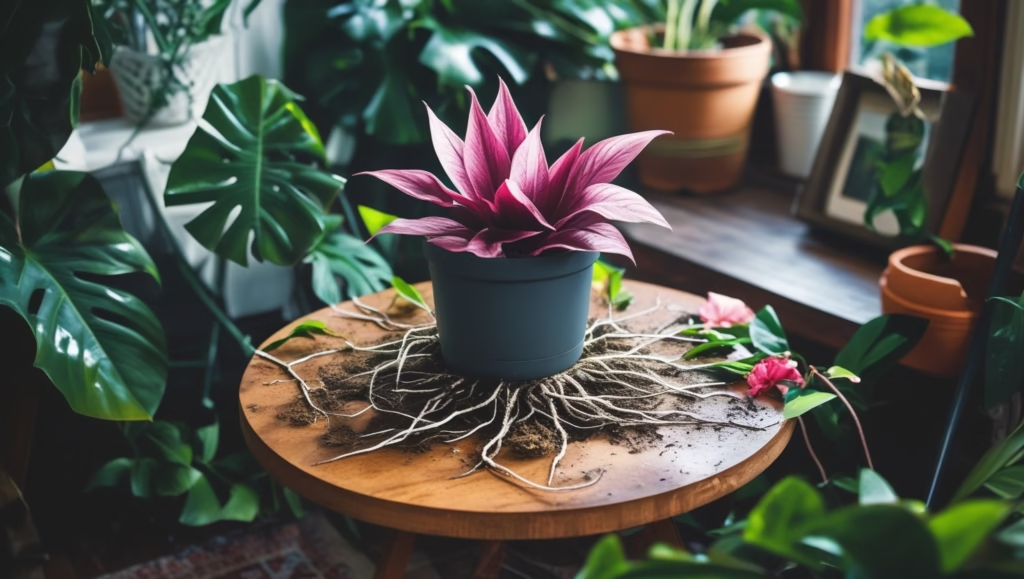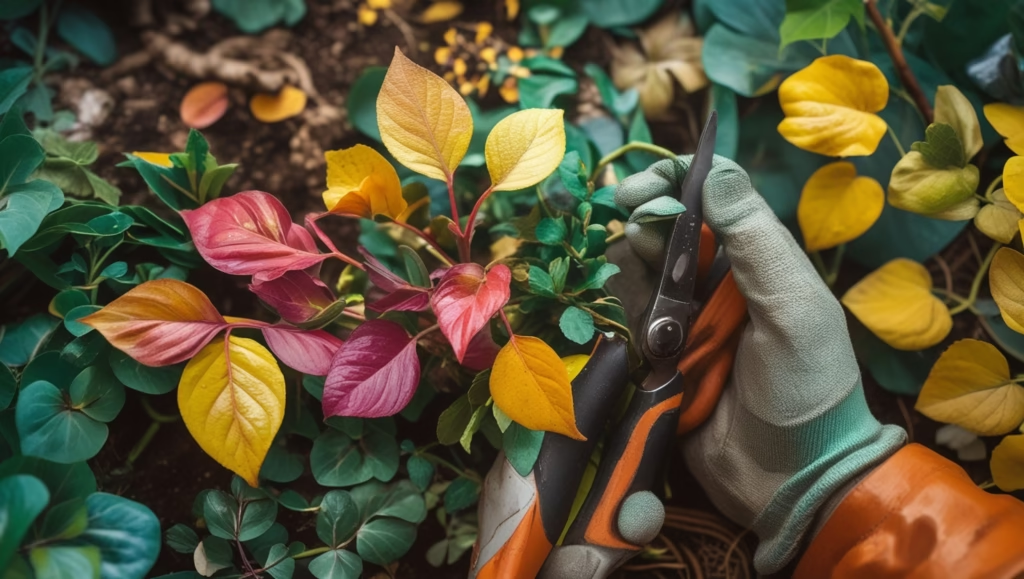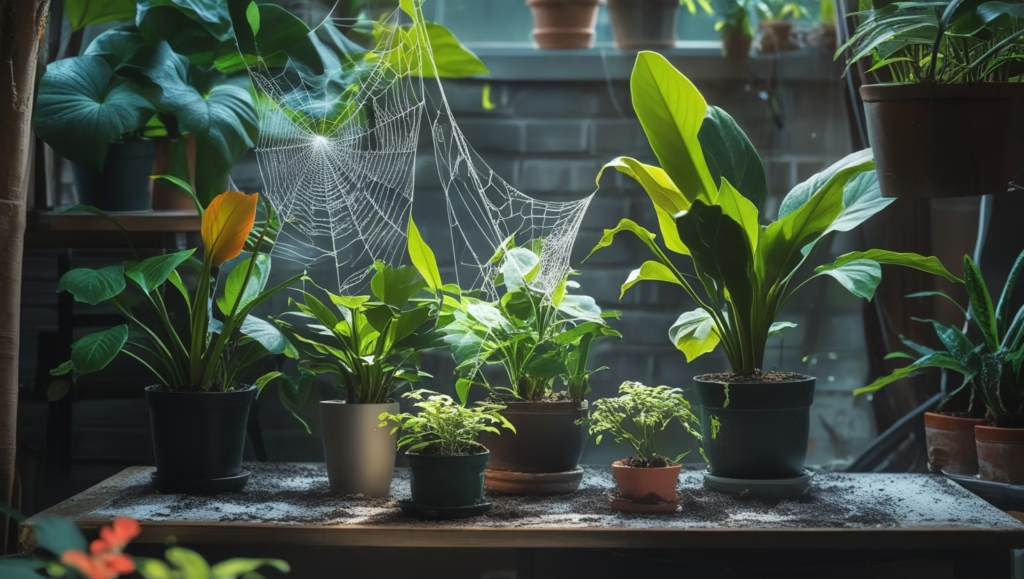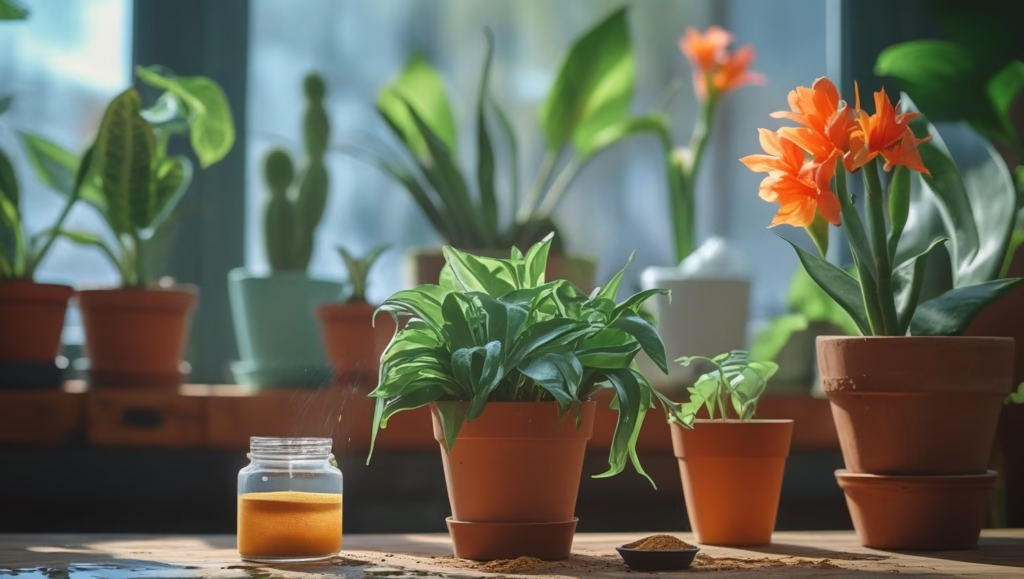
Spring Indoor Plant Care: Boost Growth Now
Every plant owner’s favorite time of year is fast approaching. There are a few things we need to do to get our plants ready and roaring for the growing season ahead. Spring is nearly sprung! If you’re in the northern hemisphere, the lambs are virtually hopping, and our indoor plants are preparing to put on a growth spurt. This guide shares essential steps to ensure your plants thrive. Use this as a step-by-step guide and implement these tips before it’s too late. Healthy plants enhance your home’s beauty and your well-being, making spring indoor plant care a rewarding ritual.
How to Prepare Your Plants for Spring
Check and Repot Root-Bound Plants

Most indoor tropical plants slow their growth during winter due to shorter days and longer nights. Surprisingly, for lots of folks, their roots continue to grow unless subjected to freezing temperatures. In fact, roots will grow substantially at anything above 10 degrees Celsius or 50 degrees Fahrenheit. This means root growth will carry on year-round. Our plants can become root-bound over autumn and winter. It’s a good idea to check them before they kick on during spring and summer to see if they need potting up into the next size. Healthy roots equal a healthy plant. It’s virtually impossible to have a healthy, vibrant plant with diseased roots.
Prune for Health and Aesthetics

I know this job can be a bit of a chore, particularly if you have lots of plants. I like to set aside an afternoon in early spring, quickly check all the roots of all my plants, and then it’s done. If any are severely root-bound, I either pot them into a bigger pot or prune the roots and put the plant back into the same pot. If anything is looking suspect, like mushy or black, don’t be afraid to cut this out. You don’t want diseased or rotting roots impacting your plant’s growth. This really will do wonders for your plant and sets it up perfectly to have a successful growing season.
Tidy Up Foliage
The next stage of our preparations is to tidy up the foliage. This is a good time to prune away any leaves or stems that are misshapen, turning yellow or brown, or making the plant look untidy. This will not only get rid of leaves and stems that are not providing any value to the plant but also tidy up its appearance. Nobody wants an ugly duckling in their home if it can be helped. Having plants that look nice will make you actually want to look after them. You can be quite brutal with your pruning too. There’s no need to shy away. If something doesn’t look right, if in doubt, cut it out.
What Specific Steps to Take
Hard Pruning and Propagation
Spring is the perfect time for this because growth will be going into turbo charge, and the plant will quickly replace what it has lost. You can even do a hard prune and reset your plant. It’s exactly what I did to my rubber plant last year. I wasn’t happy with how much it was leaning to one side, so I Henry-dafed it, and new stems happily grew within a couple of weeks. Another central trunk is nice and straight. I often do this to fast-growing plants like tradescantias and even some pothos. If the plant is looking really straggly after winter, I cut it right back and reset all the stems so that lovely new fresh growth comes through.
Propagate for Free Plants

Pruning stems gives you the perfect opportunity to propagate and multiply the plants in your home for free. I often give my jade plants a prune in spring, and this plant is just so easy to propagate. You can even propagate the leaves. Take your pruned cuttings and trim the stem to just underneath the leaf node. This is where the stems will develop new roots. Remove all but a couple of leaves at the top so the cutting doesn’t lose too much moisture through the leaves. Then plant the cut end into an inert substrate of your choice. I often use perlite, but water and even soil work just as well, as long as it’s inert, i.e., has no nutrients.
Keep Substrates Moist
You’re good to go. Keep the substrate moist but not wet. Place it in a bright spot that doesn’t get touched by any direct sun rays and wait a few weeks for roots to appear. When roots are a couple of inches long, pot up into a medium of your choice. A new stem should appear in a few weeks. You’ve just created your own new plant for free, like a true plant parent. So, you’ve repotted your root-bound plants and pruned away foliage to make the plant look pretty. You now want to clean the foliage you have left so the plant can photosynthesize correctly.
Clean Foliage for Photosynthesis

Photosynthesis, the key building block to life, is so important for our indoor plants. What’s one thing that gets in the way of this? Dead skin, otherwise known as dust. You’d be surprised how much dust accumulates on your plant over the course of a year, and this really does no favors to them. Don’t skip this step. I know cleaning the leaves of all your plants can be a bit of a ball-ache, so a little hack I do is to give my plants a shower. Seriously, take your plant to your shower, give it a spritz with cold water, getting in all the nooks and crannies.
Avoid Harmful Cleaning Methods
I wouldn’t use Dove shower gel or anything, but a good clean with running water really does revitalize your plants. Please, whatever you do, don’t use anything like mayonnaise to clean the leaves. This clogs up the stomata in the leaves and will destroy your plant in the long run. I’ve got a video on this silly hack that you can check out after this. When you finish giving your plants a shower, make sure you clear any fallen debris or leaves from the soil line. The crown of your plant, which is the central stem where the base meets the soil, is so important.
Maintain a Clean Crown
You can think of this as the central nervous system. Problems here will mean the downfall of said plant. We need to keep this area clean of debris to promote good air circulation around the crown so that mold and fungus can’t develop. Fallen debris that sits on the soil line will repeatedly get moist every time you water. Decaying moist plant matter is the perfect environment for fungus to take hold and grow. Whenever I water my plants, I always give them a check-over and remove anything sitting on the soil line. Spring is the perfect time to be extra vigilant.
Watch for Mold and Pests
One of the most common mold issues for houseplants is white mold, which is a fungus that sits on the soil surface when conditions are moist, humid, or overwatered. Be on the lookout for that. There are, of course, other foliage-based diseases we need to be aware of to make sure they’re not taking hold of our plants. Powdery mildew, rust, and mold are the big hitters. You’re looking for a white powdery coating for powdery mildew, brown rings or spots for rust, and discolored patches on leaves for mold. If any leaves have these symptoms, cut them out and treat the plant with a fungicide.
Combat Spider Mites

You need to stop the spread of disease in its tracks. It’s always best to be safer than sorry, so cut anything out that looks remotely suspect. The warm temperature and dry humidity in our centrally heated homes over winter is the perfect environment for pests like spider mites to take hold of our plants. Spider mites love warm, dry conditions—it’s their Goldilocks zone. It’s entirely possible that a colony has secretly developed over winter, especially if you’ve introduced new plants to the home. Spider mites are no joke. They will suck the life out of your plant within months before you even know what’s happened.
Inspect for Webbing
A proper check of your plants will be really beneficial, particularly those more susceptible to attack, like calatheas or alocasias. The telltale sign is the ultra-fine webbing found under the leaves and stems they use to travel around the plant—not for catching flies. Take a bright light and shine it over your plant to see if you can spot any wispy webbing. Webbing that travels large distances will likely be normal spider webbing, and there’s nothing to worry about. There are other houseplant pests, but spider mites will be the main one to look out for in spring due to the dry conditions in your centrally heated home over winter.
Adjust Watering Habits

We’ve given our plants a thorough check-over and made sure they’re clean, tidy, not root-bound, and free of pests and disease. Be mindful of water requirements now that temperatures outside are increasing and days are getting longer. It will be easy to say to just increase your watering, but this would be bad advice. Never water your plant blindly. Always check the soil to make sure it’s actually dry before adding water. You will need to make that check more regularly. Your plants will use more water and nutrients because they are growing more. It’s not just the increase in temperature that requires more water.
Use Tools for Accuracy
Check at least once a week and go from there. You can either finger the soil or use a moisture meter. The one I use is listed in my Amazon store, and I highly recommend it. Spring is also a great time to review your method of watering and consider whether it’s the right one for you. For the longest time, I’ve been a big advocate of bottom watering. I’ve got a video all about the benefits that you can check out after this. I find it great for fungus gnat prevention, and it promotes healthier root development.
Fertilize Wisely
Spring is also the time when you’ll need to blow the cobwebs off the fertilizer and start feeding your plants. This is so important because indoor plants don’t have the luxury of accessing nutrients from the great outdoors. They rely on what we give them. Failure to feed properly will result in a dull, tired-looking plant that grows slowly. You need nitrogen to keep healthy leaves. Use a balanced fertilizer suitable for indoor tropical plants. Follow the guidance on the packet for dosage and timing requirements. Don’t try to be a hero and add more than recommended—you risk fertilizer root burn, which is not a pretty thing.
Choose the Right Fertilizer
Spring is a great time to review the fertilizer you use too, which is what I’m currently doing. For as long as I can remember, I’ve been using Miracle-Gro All-Purpose, but I think I’ll switch to Focus because I’ve heard so many good things about it from you guys. The problem with Miracle-Gro is that it’s synthetic, which increases the risk of root burn compared to natural fertilizers. This only becomes a problem if you’re forgetful like me and always fail to remember when you last fertilized your plants. This means I either never fertilize or fertilize too often, causing problems for my plants’ roots. With organic, natural fertilizers, this is less of an issue.
Battle Fungus Gnats
The great thing about winter is that the fungus gnat population tends to die off a little bit. The buggers are still there, but the cold weather does keep the numbers down. No doubt, when the warm weather comes back, the battle for power in your home will be raging for months. It’s a good idea to have a plan to try and win the war, at least for this year. Get your potions and homemade remedies stocked up and get your battle face on because this is going to be a brutal war. My plan is to bottom water like I normally do. This keeps the top of the soil drier, making it less hospitable for gnats to lay their eggs in the soil.
Use Traps and Remedies
Stock up on those yellow sticky traps and replace the ones covered in flies already. I’ll be sprinkling Ceylon cinnamon powder on the soil, which is a great hack for gnat control. Let me know your battle plan in the comments. Next to consider is placement. You might have moved your plants nearer to the window during winter to give them access to better light and keep them looking relatively fresh. With spring coming fast, you should move them away again. They can handle full sun in winter, but as it gets stronger in spring and summer, you don’t want the sun to burn the foliage of your beloved plants before they get settled in for the growing season.
Optimize Plant Placement
I like to shift things around and get them in the best positions. You want to make sure your sun-loving plants like cacti, succulents, and snake plants are in a sunny spot. Your thin-leaf plants, such as dieffenbachias, are set away from the brightest window. Try not to fuss too much because some plants do tend to get stroppy when moved around too much. You might see some unexpected leaf drop. One plant that suffers from this leaf drop the most is the very popular rubber plant. There are a few reasons why this happens that you need to know about, so check out my video to find out what they are.